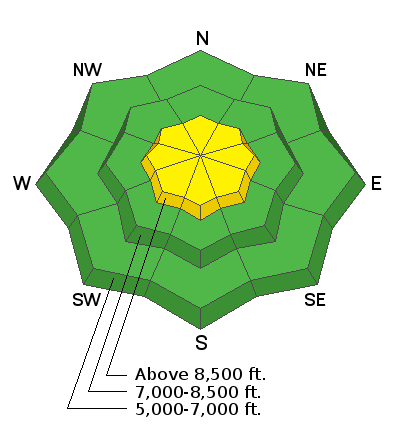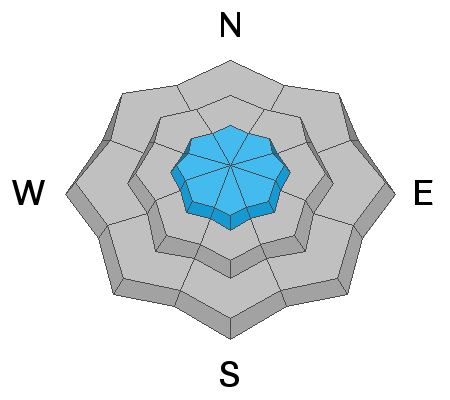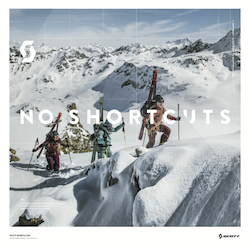Forecast for the Logan Area Mountains

Issued by Toby Weed on
Saturday morning, December 12, 2020
Saturday morning, December 12, 2020
Not enough snow fell in the Logan Zone to change conditions much, and the avalanche danger remains LOW on most slopes. However, areas with heightened conditions and MODERATE danger exist on some steep upper elevation slopes where people could trigger loose sluffs or shallow slab avalanches consisting of drifted new snow. The avalanche danger will continue to rise in the backcountry in the next few days as new snow accumulates and is drifted onto widespread preexisting weak snow.
- Evaluate snow and terrain carefully, and avoid steep drifted slopes.

Low
Moderate
Considerable
High
Extreme
Learn how to read the forecast here
 Special Announcements
Special Announcements
The holiday season is right around the corner!! Looking for that special something for your partner?
Well, we've got an easy shopping solution for you ...Buy your gifts at our Pray for Snow online auction and support the UAC in Logan. HERE
Well, we've got an easy shopping solution for you ...Buy your gifts at our Pray for Snow online auction and support the UAC in Logan. HERE
 Weather and Snow
Weather and Snow
4 or 5 inches of light new snow fell overnight at upper elevations in the Bear River Range, with moderate westerly winds. It is snowing this morning and snow showers are possible throughout the day. It will be cloudy today with moderate westerly winds, mountain temperatures in the teens, and wind chill values around -6°F ! After a brief break tomorrow, a stronger wave of storminess is forecast to pass over the zone Sunday night and Monday, with 4 to 10 inches of accumulation possible at upper elevations near the Idaho State Line.
Currently, hitting rocks or other shallowly buried obstacles presents a significant hazard in the backcountry. Most slopes have less than about 2' of total snow, and a steep temperature gradient is turning the shallow snow into loose sugary or faceted grains. In many places, the weak snow is easy to punch through to the rocks below.
Avalanche Problem #1
Wind Drifted Snow
Type
Location

Likelihood
Size
Description
Potential for triggering slabs of drifted new snow exists on some steep upper elevation slopes where shallow drifts built up on loose sugary or faceted snow, and people could trigger avalanches. In more sheltered upper elevation terrain, loose sluffs of new snow are possible because the older snow underneath is very weak, faceted, and loose.
- Even a small avalanche could be very dangerous due to shallow early season snow conditions. You do not want to get caught and carried over rocks or strained through bushes and stumps, so it's best to avoid travel on all steep drifted slopes.
Additional Information
Everybody should make time to examine and practice with your avalanche rescue equipment, and convince your backcountry partners to practice with you. Watch our companion rescue video HERE
My tip for avoiding avalanches in the backcountry is to keep your slope angles low. Avoid and stay out from under slopes steeper than about 30 degrees. Get a tool to measure slope angle and practice with it in the backcountry.
General Announcements
Visit this website with information about Responsible Winter Recreation by the Utah Office of Outdoor Recreation.
If you missed the 13th Annual Utah Snow and Avalanche Workshop, the recordings are available for purchase from the UAC Store. HERE
The Tony Grove Road is not maintained for wheeled vehicles in the winter.
EMAIL ADVISORY. If you would like to get the daily advisory by email you subscribe HERE.
Remember your information can save lives. If you see anything we should know about, please help us out by submitting snow and avalanche observations....HERE. You can also call us at 801-524-5304, email by clicking HERE, or include #utavy in your tweet or Instagram.
I will update this advisory by around 7:30 tomorrow morning.
This forecast is from the USDA Forest Service, which is solely responsible for its content. The forecast describes general avalanche conditions and local variations always occur.




